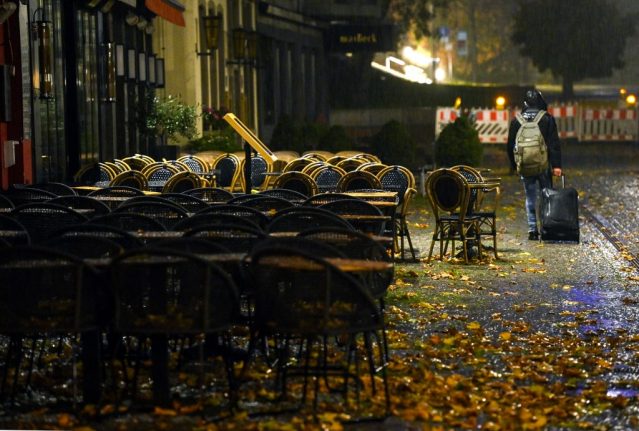The court has chosen Guy Lofalk, an attorney proposed by Saab, to serve as the administrator of the reorganization.
Lofalk, together with Saab CEO Jan Åke Jonsson and international reorganization expert Stephen Taylor, will together lead the company’s efforts to avoid bankruptcy.
“Today is the beginning of a new chapter in Saab’s history”, said Jonsson in a statement, adding that “the road ahead will not be easy”.
“Many have already suffered considerably as a result of the crisis in the automobile industry and sacrifices will be a part of our future, but after a period of tough decisions we will have laid the foundations for a new beginning.”
Lofalk struck a positive tone on as he readied himself to meet with Saab’s creditors in six weeks.
“I can already say that I am impressed by the competence within Saab”, he said in a statement.
“With three strong automobile models just around the corner it would be a waste not to try to find a long-term way forward.”
Earlier in the day, Jonsson explained the rationale behind the decision to restructure.
“We explored and will continue to explore all available options for funding and/or selling Saab and it was determined a formal reorganization would be the best way to create a truly independent entity that is ready for investment,” he said said in a statement
In Sweden, a court approved restructuring is similar to bankruptcy protection in the United States. It gives a company time to restructure its operations and finances.
It also must happen according to certain steps mandated by law, and be led by a court-appointed administrator.
A reconstruction usually entails an arrangement through which creditors agree to write off a portion of the company’s debts.
The agreement must however be approved by a certain percentage of creditors before coming into force.
While a reconstruction take place, creditors can’t request that company’s assets be seized or that it be put into bankruptcy proceedings.
The move came after Saab’s owner General Motors warned that Saab would have to file for bankruptcy protection “as early as this month” unless it received help from the Swedish government, which in turn flatly refused to step in and rescue the auto maker.
Restructuring will allow parts of Saab to survive and could enable suppliers, who would lose all the money owed them by the company if it filed for bankruptcy, to get some money back by agreeing to accept partial repayment.
GM said in a separate statement that the move was aimed at creating “a fully independent business entity that would be sustainable and suitable for investment.”
“As part of the process, Saab will formulate its proposal for reorganization, which will include the concentration of design, engineering and manufacturing in Sweden,” it said.
If the court approves the restructuring, it would be executed over a three-month period and would “require independent funding to succeed,” GM said.
Funding would be sought from both private and public sources, it added.
The government would provide “some support” during the reorganization period, according to GM.
Åkesson pointed out that Saab has three new models ready for launch over the next year and a half.
“Saab has an excellent foundation for strong growth, assuming we can get the funding to complete engineering, tooling and manage launch costs. Reorganization will give us the time and means that help get these products to market while minimizing the liquidity impact of Saab on GM,” he said.
Saab was to hold a press conference later Friday at its main hub in the southwestern town of Trollhättan.
Saab employs about 4,100 people in Sweden, 3,700 of whom work in Trollhättan.
Swedish Industry Minister Maud Olofsson, who has sharply criticised GM’s decision to let Saab go, said she planned to visit Saab’s hub in Trollhättan soon.
“Our role is to contact town and regional officials and see what we can do in these hard times. Our focus is to help the people there,” she told news agency TT.
She has suggested Saab’s technological know-how could to be put to use in more in-demand sectors such as wind power.
Including suppliers, some 15,000 jobs in Sweden are believed to be at risk if the unit disappears.
In response to concerns from Saab’s supplier base, General Motors Europe said it would “promptly establish a viable mechanism” for payment of suppliers’ claims towards Saab.
GM bought 50 percent of Saab in 1990 and acquired the rest 10 years later.
But the Swedish company has registered chronic losses over the past 20 years.
The brand, once renowned for its cutting-edge technology and futuristic designs, has in recent years suffered from an aging product line and plunging sales. In the fourth quarter last year, Saab’s sales nosedived 38 percent to just 17,900 cars.
Sweden’s two carmakers are a source of pride for its citizens, and the disappearance of Saab would be a hard blow.



 Please whitelist us to continue reading.
Please whitelist us to continue reading.